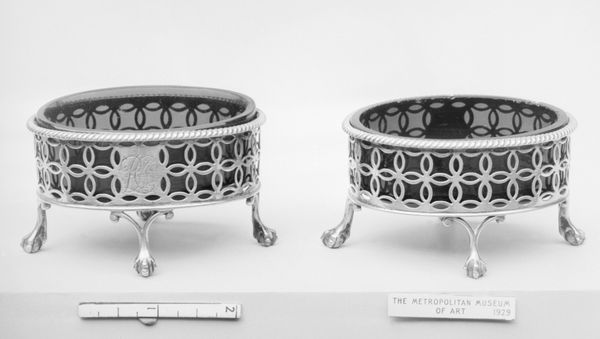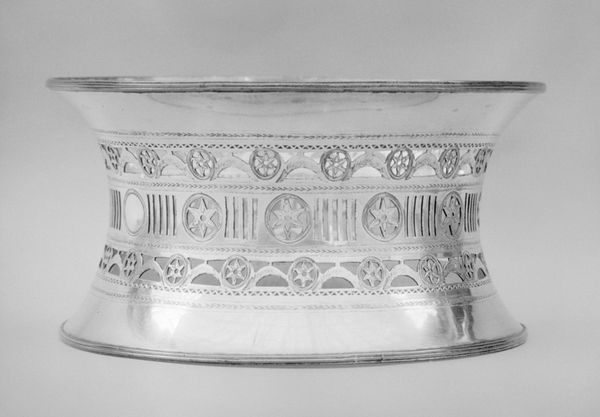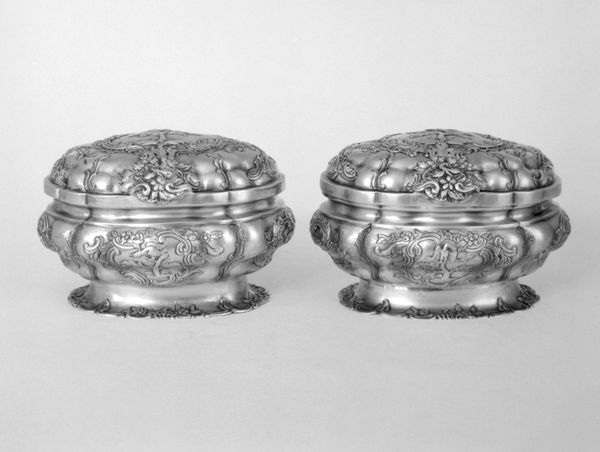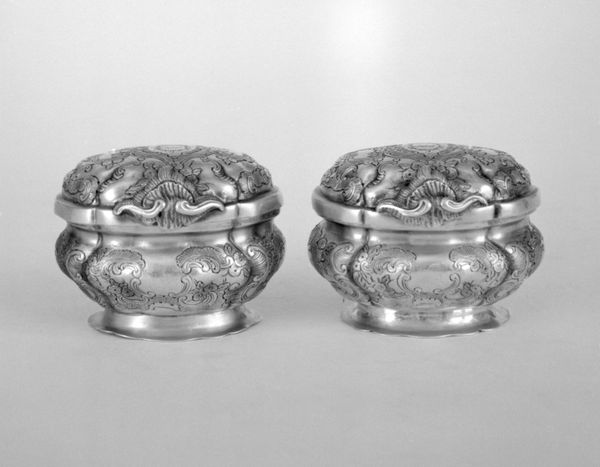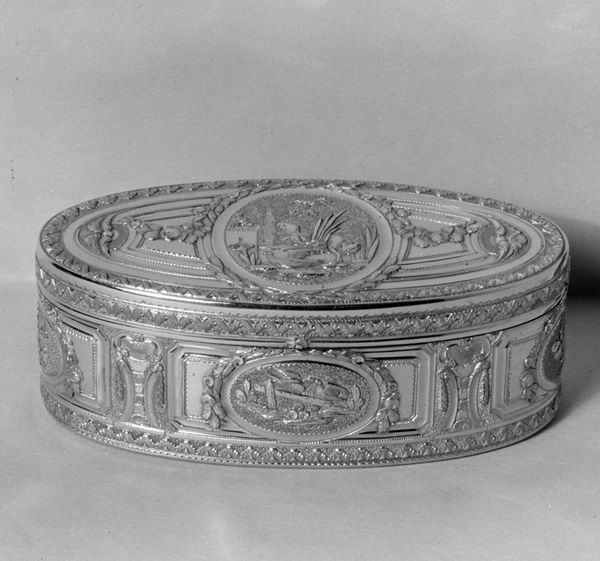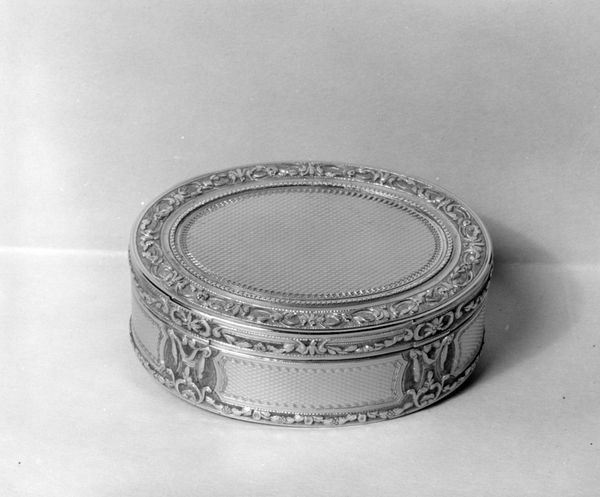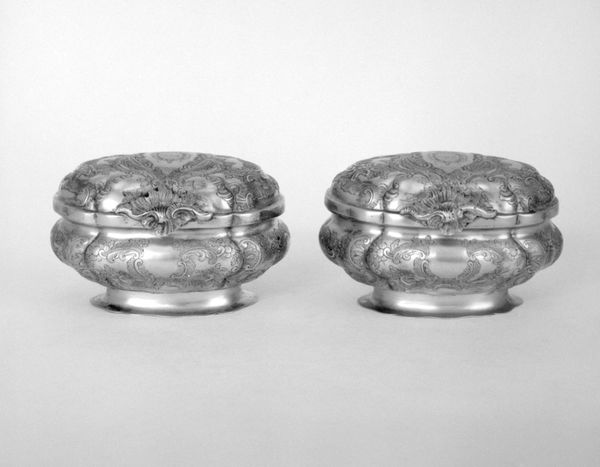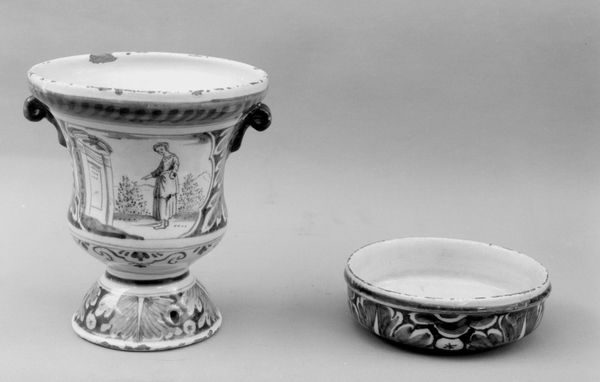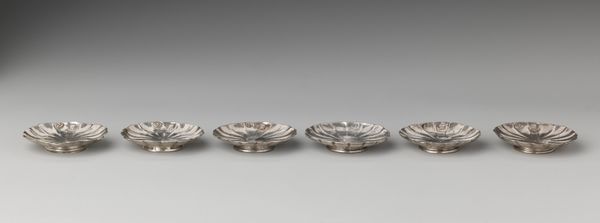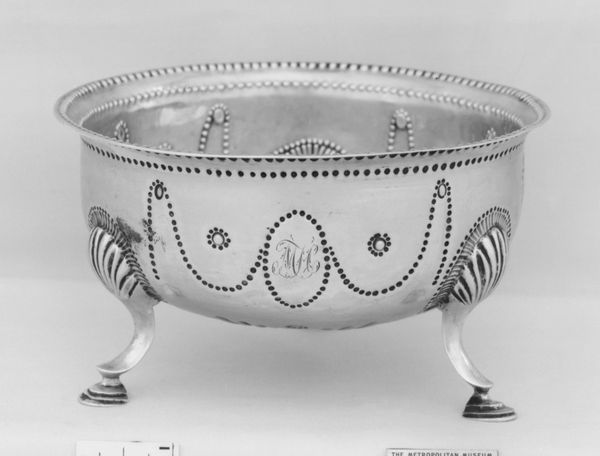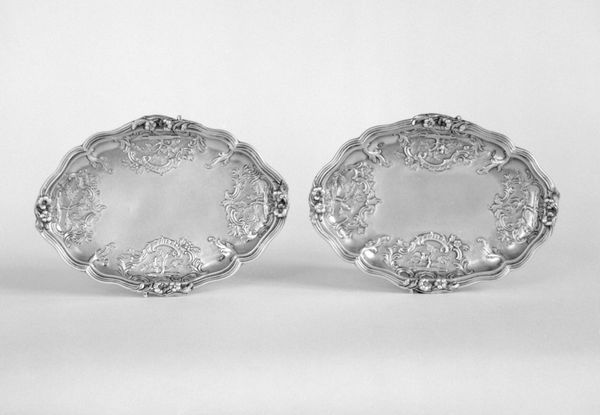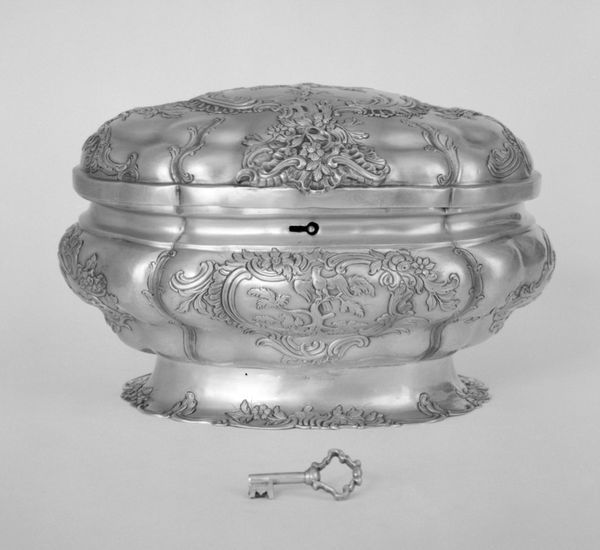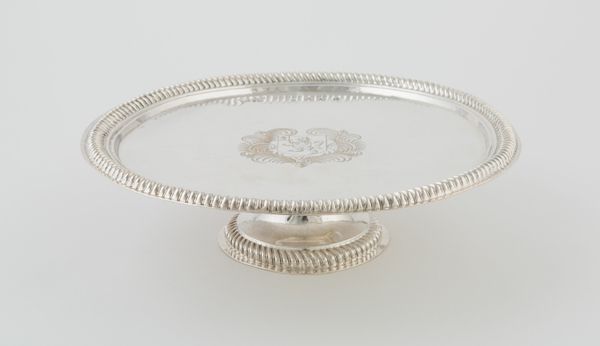
Dimensions: each: 2 × 2 5/8 × 3 1/8 in. (5.1 × 6.7 × 7.9 cm)
Copyright: Public Domain
Editor: So, here we have "Three Saltcellars" made between 1783 and 1784 by Robert Hennell I. They’re made of silver, so they have this delicate and ornate look, and each one has these almost paw-like feet. They feel very decadent! What is your take on them? Curator: Decadent is definitely a keyword here. These objects speak volumes about 18th-century power structures and social rituals. Salt, then as now, may seem basic, but back then it signified wealth. Consider who would have these, and the labor required to mine the metal and craft the pieces. Who was excluded from that luxury? Editor: Right, so it’s not just about a fancy way to serve salt; it's about displaying status and benefiting from systems of inequality. The Rococo style certainly underlines that, with all the embellishment. Curator: Precisely. And look at the specific details: the crests, the symmetry, even the number three… Could this allude to family legacy or a specific social relationship? These objects acted as a material language understood amongst a certain class of people. How can we read the stories embedded in these objects about hierarchy? Editor: That's a great point. I hadn't considered the symbolic weight beyond just 'fancy silverware’. So how does that historical context affect how we should view such objects in a modern museum? Curator: We need to unpack the narratives they represent. Museums should facilitate conversations about wealth disparity and privilege, about the legacy of craftsmanship dependent on exploited labour. These saltcellars become tools for critical dialogue. Editor: That is a huge change of perspective. Now I see these simple things are a starting point to deeper discussions. Thank you! Curator: And thank you, it is vital we see artifacts as opportunities for transformative discourse!
Comments
No comments
Be the first to comment and join the conversation on the ultimate creative platform.
